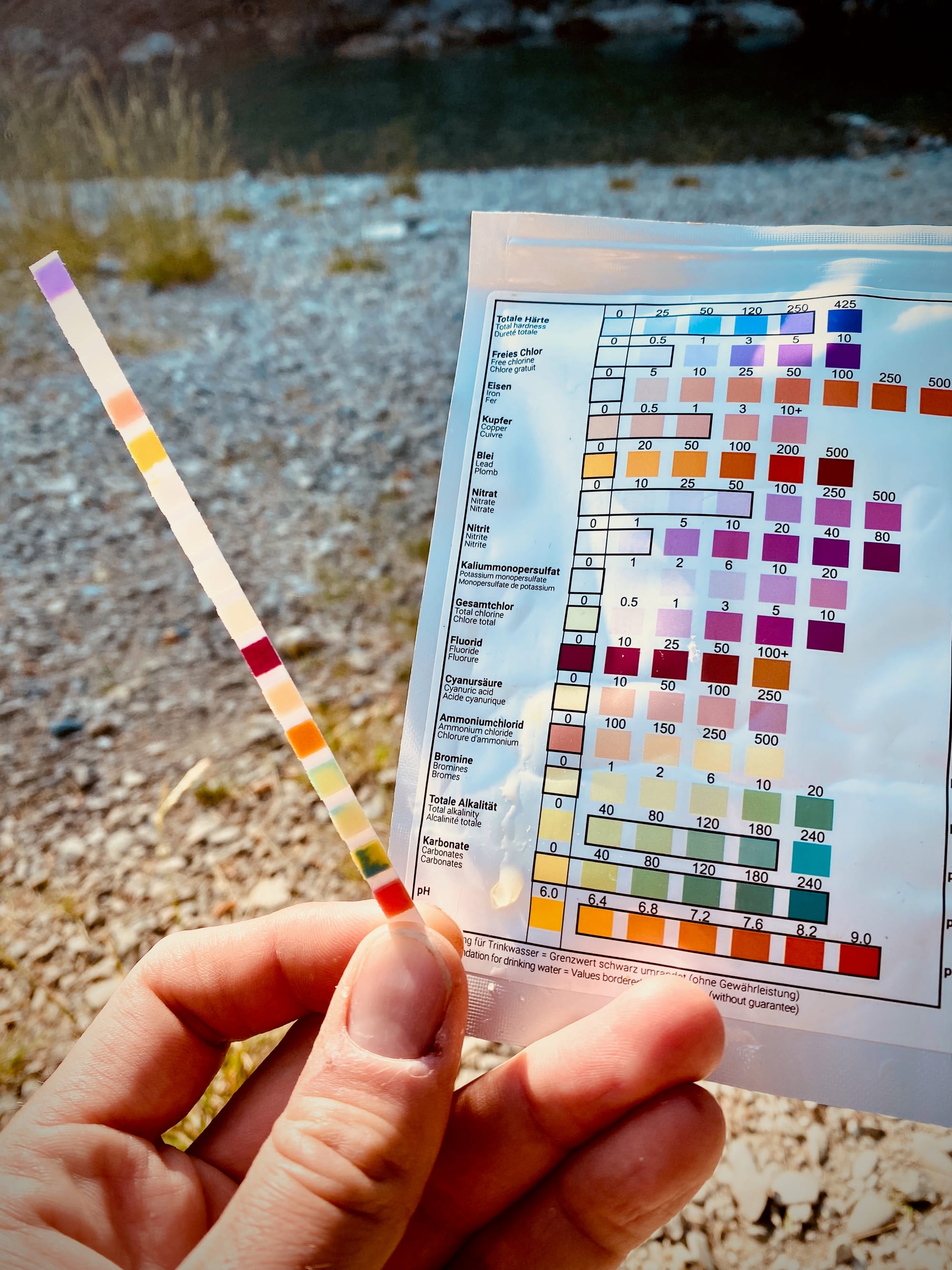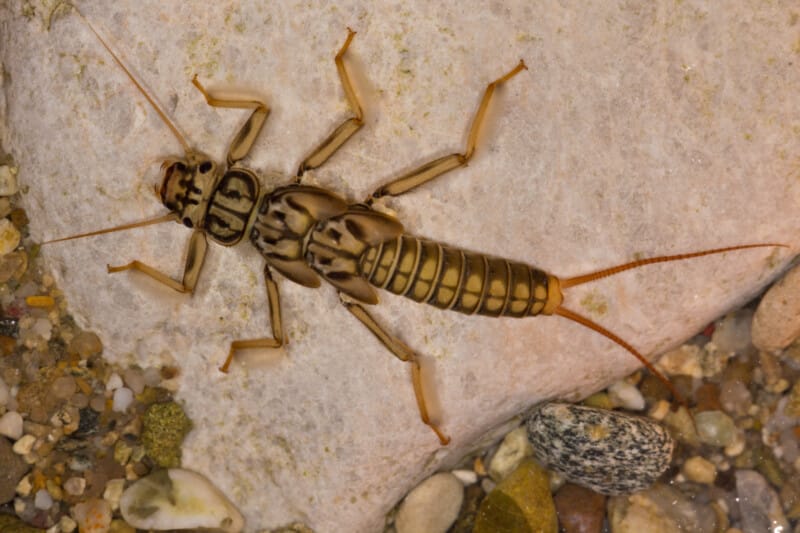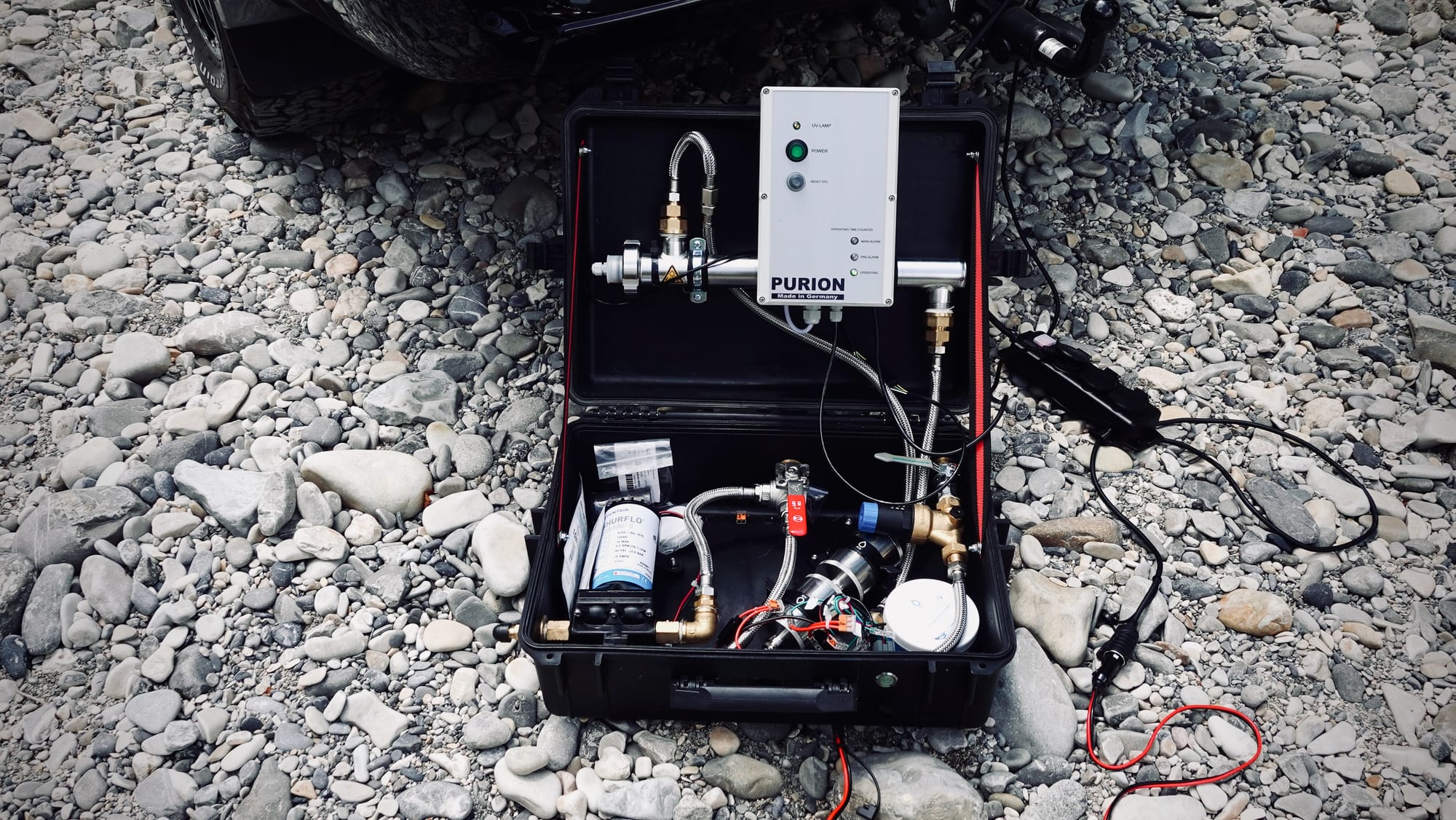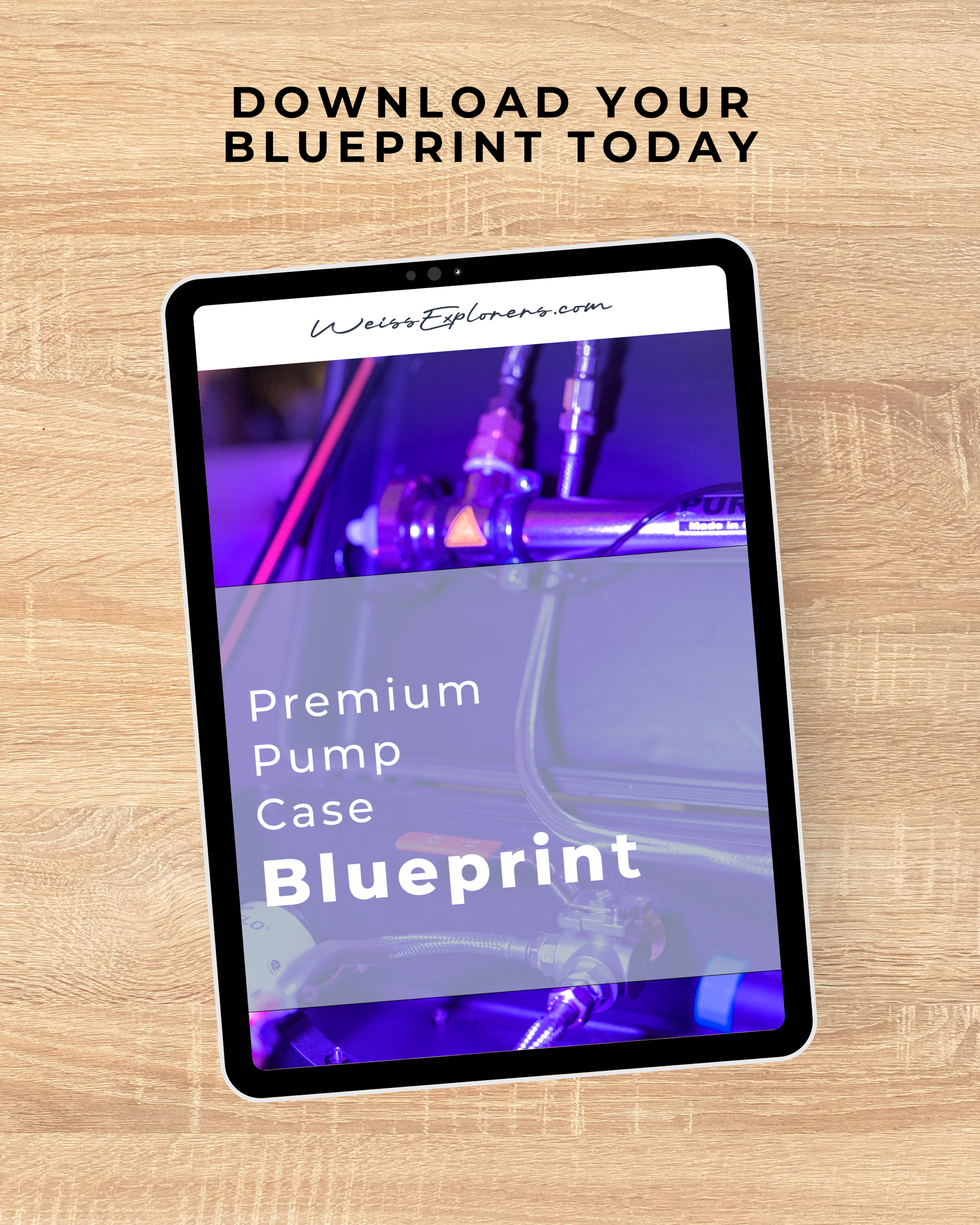Why Clear Water Isn't Safe Water
Clear water doesn’t always mean safe water. Discover the hidden risks in natural water sources and learn how proper filtration keeps you healthy while overlanding.

Clear water does not mean that it is safe and drinkable! There are many invisible dangers lurking in the water and you have to be especially careful when traveling and unfamiliar with the region. It is a fact that even mountain streams can be polluted, e.g. with PFAS, microplastics, and possibly even protozoa. Most of the time it is simply impossible to determine the origin of the water. And the further downstream you go, the greater the risk of catching something.
In this article, I will get into the details of possible water threats. Some of them are natural, others are man-made. Some are threatening and easy to remove or inactivate. Others are more complicated to remove, but to a certain degree we can handle those too.
We decided to develop our own water filter system for overlanding because we had to refill our water supply during a short trip through Slovenia. We found that unsafe water sources are quite easy to find ...
The solution was to build a portable pump case with multi-stage filtration, producing safe, clean drinking water regardless of the water source!
In a follow-up, I will show you why reverse osmosis (RO) is not an optimal solution for overlanding and what problems it can cause.
Water Quality Indicators
There are various ways to assess the quality of water. First of all, it is important to get an idea of the surroundings. If the water source is located in a nature reserve, for example, we can assume that the water quality is good. However, there is still a risk that animal waste (faeces) or carcasses may be present in the water upstream. There is also a risk of protozoa, as they thrive in cool streams and can survive for long periods. Did you know that viruses survive much longer in cold water than in warm regions with high water temperatures?
Prefer flowing water to standing water
Never take water from puddles, ponds or standing pools. Flowing waters (streams, rivers, springs) are constantly renewed and are generally less polluted.
Watch out for foam
Foam or deposits on the shore can indicate organic pollution (e.g. sewage, surfactants). Avoid such areas.
Prefer natural or protected areas
Water bodies in nature reserves or remote regions are usually less polluted. Nevertheless, always filter and disinfect the water, even here.
Be aware of agricultural use in the surrounding area
Water bodies in intensively farmed regions may contain nitrates, phosphates and heavy metals from artificial fertilisers, manure or pesticides. It is better to choose sources outside agricultural areas.
Observe microorganisms as indicators
The presence of caddis fly larvae, stonefly larvae or freshwater shrimp indicates clean, oxygen-rich water. The absence of such organisms can be a sign of pollution (see quality class table).
Avoid algae blooms
Water with heavy algae growth, greenish cloudiness or odour is usually low in oxygen and biologically polluted (high BOD₅ value → many decomposition processes → little oxygen).
Chlorine alone is not enough
Some protozoa (e.g. Giardia, Cryptosporidium) are resistant to chlorine. Therefore, never rely solely on chemical disinfection – mechanical filtration + UV are mandatory.
Springs and hillside runoff are ideal
Fresh spring water or hillside runoff at higher altitudes is usually free of pollutants, provided there are no pastures or settlements above.
Perform a sensory test
Before you take water: look & smell. Turbidity, smell of sulphur, oil film or discolouration = stay away! Also, get yourself test strips to test the water before filling it up. These can give you a general overview of water quality using various indicators.

Be careful after rainfall
After heavy rain, surface runoff can flush pollutants, fertilisers and sediments into rivers. Shortly after thunderstorms, it is better to wait until the water is clear again.
We gained experience with our pump case with multi-stage filtration on the Verdon River in France. This river is located in a protected area and serves as a source of drinking water for the region. We therefore assumed that the water in the Verdon was very clean. This was also indicated by the presence of small creatures known as stonefly larvae. We saw many of them. However, what puzzled us was the fact that they were all dead. There could be many reasons for this, one of which is that the water quality, temperature, nitrate or oxygen content had deteriorated, causing the animals to die. Another possibility is that the larvae's life cycle had come to an end and they had died of natural causes.

Here is a table showing other organisms that we can use as indicators of water quality:
| Quality Class | Degree of Organic Pollution | Chemical Parameters | Important Indicator Organisms | Typical Fish Species |
|---|---|---|---|---|
| I | Unpolluted to very slightly polluted | BOD₅: ≤ 1 mg/L NH₄⁺-N: traces O₂ minimum: > 8 mg/L | Stonefly larvae, freshwater mussel | Brown trout |
| I–II | Slightly polluted | BOD₅: 1–2 mg/L NH₄⁺-N: ~0.1 mg/L O₂ minimum: > 8 mg/L | Caddisfly larvae, stonefly larvae, flatworms, pea mussel | Grayling, brown trout |
| II | Moderately polluted | BOD₅: 2–6 mg/L NH₄⁺-N: < 0.3 mg/L O₂ minimum: > 6 mg/L | River snails, mayfly larvae, caddisfly larvae, freshwater shrimps | Barbel, grayling, pike, nase, perch |
| II–III | Critically polluted | BOD₅: 5–10 mg/L NH₄⁺-N: < 1 mg/L O₂ minimum: > 4 mg/L | Leeches, snails, mussels, small crustaceans, green algae colonies | Eel, carp, tench, bream |
| III | Heavily polluted | BOD₅: 7–13 mg/L NH₄⁺-N: 0.5–several mg/L O₂ minimum: > 2 mg/L | Water lice, isopods, ciliate colonies, sponges | Tench, roach |
| III–IV | Very heavily polluted | BOD₅: >10 mg/L NH₄⁺-N: >2 mg/L O₂ minimum: < 2 mg/L | Red midge larvae, tubifex worms, ciliates | — |
| IV | Excessively polluted | BOD₅: >20 mg/L NH₄⁺-N: several mg/L O₂ minimum: < 1 mg/L | Sludge worms, sulfur bacteria, flagellates, ciliates | — |
BOD₅ (Biochemical Oxygen Demand over 5 days) is a measure of how much oxygen microorganisms need to break down organic matter in water. It’s one of the key indicators of how “clean” or “polluted” a water sample is.
- Low BOD₅ values → little organic pollution → the water is clean and well oxygenated.
- High BOD₅ values → lots of organic matter (from sewage, waste, or decay) → the water is polluted and low in oxygen.
Clean drinking water typically has a BOD₅ below 1 mg/L,
while heavily polluted rivers can reach 10 mg/L or more.
BOD₅ tells us how much “breathing room” is left for life in the water.
The lower the BOD₅, the healthier and safer the water.
Unsure about the water quality even in natural and protected environments, we used our DIY pump case with a multi-stage filtration and UV sterilisation - just to be sure!

Our pump case can handle these highly risky pathogens and substances:
Invisible Threats
HIGH RISK
A) Bacteria
Types: E. coli, salmonella, legionella, campylobacter
Size: 0.5 - 3 µm
Risk: High - diarrhea, vomiting, possible death
Our System: ✅✅ Mechanical 0.1 µm filter + UV system (double safety)
B) Viruses
Types: Hepatitis A, norovirus, rotavirus
Size: 0.02 - 0.1 µm (VERY small!)
Risk: High - Liver inflammation, severe gastrointestinal issues
Our system: ✅ UV sterilization (essential!) + partial with mechanical 0.1 µm filter
C) Protozoa
Protozoa are single-celled microorganisms that are significantly larger than bacteria (typically 2-50 micrometers). They occur naturally in surface water—in lakes, rivers, streams, and even in contaminated drinking water.
Types: Giardia lamblia, Cryptosporidium, Entamoeba histolytica
Size: 4 - 30 µm
Risk: Severe diarrhea, can be life-threatening
Our System: ✅✅ Mechanical 0.1 µm filter + UV system (double safety)
Health risks posed by Protozoa
1. Giardia lamblia
- Size: 8-12 µm
- Disease: Giardiasis (“Beaver Fever”)
- Symptoms: Severe diarrhea, cramps, nausea, weight loss
- Duration: Weeks to months if left untreated
2. Cryptosporidium
- Size: 4-6 µm
- Disease: Cryptosporidiosis
- Symptoms: Watery diarrhea, dehydration, fever
- Special feature: Extremely resistant to chlorine!
3. Entamoeba histolytica
- Size: 10-30 µm
- Disease: Amoebic dysentery
- Symptoms: Bloody diarrhea, liver abscesses
- Risk: Can be life-threatening
D) PFAS
Risk: High - cancer, liver damage
Our System: ⚠️ Activated carbon helps PARTIALLY, but not completely
- PFAS are difficult to remove - activated charcoal reduces them
- Complete removal only with RO or special filters
- Mostly below limit values in Europe
MODERATE RISK
E) Heavy metals
Risk: Medium - Long-term damage, neurotoxin
Our System: ⚠️ Activated carbon filter (removes some, not all)
F) Hormones & Endocrine Disruptors
Risk: Medium - Long-term risk
Our System: ⚠️ Activated charcoal removes partially, not completely
G) Microplastics
Risk: Undetermined - Long-term risk unknown
Our System: ✅ 0.1 µm filter (removes many particles)
H) Nitrates
Risk: Medium - “Cyanosis” in babies
Our System: ❌ Mechanical filters & activated carbon do NOT remove it
- Nitrate remains in the water (only RO and ion exchanger remove it)
- Mostly regulated in the EU, tap water tested
- For babies: bottled water recommended
I) Chlorine
Risk: Low - Taste, smell, long-term concerns
Our System: ✅✅ Activated carbon removes it completely
J) Pesticides & VOCs
Risk: Medium - Long-term risk
Our System: ✅ Activated carbon (removes most)
Why Does it Matter?
There are many hidden risks in water – even the water coming from our household taps isn’t always as safe as we’d like to believe. We might not get sick from drinking a single glass, but over time, low levels of contaminants can affect our health.
Across Europe, water quality varies greatly. After severe weather events or heavy rainfall, it’s not uncommon for wastewater treatment plants to reach their limits. In such cases, excess water may be discharged without full treatment, contaminating rivers and local water supplies.
When we travelled through Slovenia, we once wanted to fill our tank from a house connection. Luckily, we learned just in time that it wasn’t potable water — and at that time, we didn’t yet have our own filtration system on board.
The same applies to natural water sources. Invisible dangers such as protozoa, bacteria, or heavy metals can be present even in crystal-clear streams. Especially when travelling in unfamiliar regions, extra caution is essential.
Read more about water quality and risks in this article.
Protecting our health means relying on a safe and durable filtration system — one that doesn’t add its own problems through cheap plastic components. That’s why I build my systems primarily from stainless steel and premium-grade parts, ensuring that every drop of water is as pure and safe as it should be.
Conclusion
We’re a family travelling across Europe — always aiming for the perfect balance between adventure and safety. To stay self-sufficient and ready for anything, I designed a portable pump case for travellers and overlanders.
Read more about our multi-stage filtration pump case here.
Because health matters most, we built our system using only premium, safe materials. A little knowledge about water quality and management can empower you to make better, more informed decisions on the road.
Already a Member? Download the Pump Case Blueprint here.

Curious? Download the free blueprint and start building your own pump case today!
